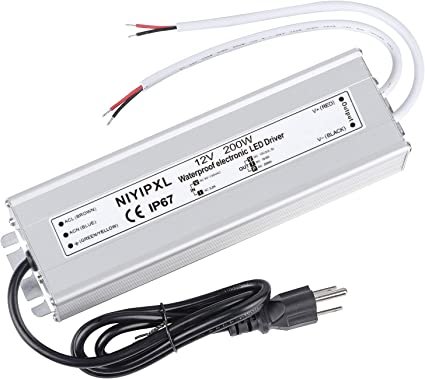Whether it’s magnetic, chemical, or electrical, everything needs some type of energy and power. Your lighting needs are no exception. Applications desire a power source apart from a regular wall outlet such as in architectural lighting, street lighting, decorative lighting, stage and theater lighting, and electronic billboards. For application that contain a special lighting component, there are advantages to choosing led power supply.
Billboards are a great way to advertise, but they can even be a pain to change and maintain. Those big, bright LED-lit billboard signs you see when driving on the freeway, can’t simply be plugged into the wall. They desire a continuous source that provides even distribution of power to each section. Unlike traditional power supplies, LED power supplies provide frequent current and/or frequent voltage so as to light your applications with maximum efficiency.
Many of the LED power supplies are also encased in a splash-proof metal or plastic case for a wider selection of uses both indoors and out. Other features you might see on LED vitality supplies include built-in active PFC (Power Factor Correction) for better efficiency, adjustable awayput voltage/current for exact customization, dimming function to get more functionality, and multiple protection (short-circuit, overload, over-voltage, over-temperature) for added safety.
You can have the lighting style you want in a wider variety of locations, all while saving time and space. You should use them in big industrial size applications or your small garage projects at home. Let your imagination run wild and you will be certain to wow the crowd.
Since LEDs are a good state component and require electronic circuits to emit light, a driver that transforms AC to DC current will be used in the light fixture and this will drive the need to look for a power with sufficient power and output characteristics. Most light designers have purchased an off-the-shelf AC to DC power supply based on these requirements and, for initial testing, it works well. Light occurs and the fixture works. Next thing in the process is to take the fixture for regulatory testing. At this point, the marketing collateral is getting ready and the sales people are anxious to take the new fixture to advertise. A call from the regulatory testing house with news of the merchandise not passing the standards however, sends everyone buying a solution. Add an EMI filter, you might suggest, put EMI cores on the input wires someone else would say. Meanwhile, the price of the fixture starts climbing and what appeared to be a nice-off-the shelf inexpensive power requires add-ons to perform.
Life Expectancy
The longer life of LEDs of over 50,000 hours is very appealing to customers. However, lifespan of the LED driver must also be considered. Many think this is about mean time between failure (MTBF); however, this is not life expectancy. Generally, MTBF is calculated based on component count and offers just one part of information on reliability and life expectancy. When selecting the optimum power for LED lighting, look for a power supply that is specifically made for the demands of the LED and meets vitality and output voltage. Make sure it lists EN55015 for Electromagnetic Interference (EMI) compliance (Figure 1), has sufficient life expectancy to complement the life of the LEDs in the fixture and then move on to other requirements such as low leakage current for Canada, and meets IEC61000-3-2 class C for the European market.
Illumination Control
The ability to control the illumination based on area occupancy is a growing field in the LED lighting market. Cost reductions can be realized by lighting only the path or the area that is being occupied in an office building or parking structure. Since LEDs are electronic devices, limiting the current can achieve the desired outcome in dimming the light and saving energy and costs. In certain applications, both wired and wireless control systems are taking good thing about existing infrastructure developed for networking schemes. Moreover, LED drivers are built to acquire embedded IP addressing in order to interface with an electronic console to take commands and change the light intensity based on occupancy sensing and other parameters.
They will also report dynamic information, such as ambient temperature, back to the controlling gaming console. This can be an opportunity for the manufacturer of the LED drivers to influence lighting design in the first stages by giving overall flexibility in sensing and accounting critical information via wired or cordless antennas and receivers. With new technology offered, this can even be done via an AC line. The communication protocol is varied by application-specific LED fixtures. Area lighting uses Digital Addressable Lighting Interface (DALI) commands where entertainment lighting DMX-512 is widely employed. Remote Device Monitoring or RDM is another step-up for wireless control in architectural lighting. No real matter what the protocol is, a smart driver will be the future for powering LED light fixtures.
